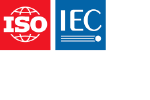Тезис
This part of ISO/IEC 16500 takes a practical approach to the specification of Information Representation. Just the
information types that cannot be dispensed with in producing the set of DAVIC applications (viz. broadcast, movies
on demand, home shopping, etc.) are specified. The approach taken in this part of ISO/IEC 16500 starts by defining
the various monomedia information types. They include character, text, fonts, service information, audio, video, and
graphics. Consistent with DAVIC principles, one tool is selected for the encoding of each information type.
Multimedia components comprise one or more monomedia components. This part of ISO/IEC 16500 defines the way
in which multimedia information is coded and exchanged. This includes the definition of a virtual machine and a set
of APIs to support interoperable exchange of program code. Finally, this part of ISO/IEC 16500 defines a Reference
Decoder Model for contents decoding which provides constraints on content. The major problem addressed by the
model is to ensure interoperability of applications by specifying memory and behaviour constraints for contents
decoding by a hypothetical STU, without specifying the internal design of an STU. An application built according to
the reference decoder model will be an "ISO/IEC 16500 conforming application" and will successfully execute on a
STU that is compliant to ISO/IEC 16500.
For each monomedia and multimedia component the coding format is specified, as well as applicable constraints for
coding of the components. Three types of monomedia components are distinguished. Monomedia components which
are included within other monomedia components, such as characters within text, are of type implied. Non-implied
monomedia components that do not require synchronization with a time base at play back, are of type stand-alone.
Finally, non-implied monomedia components of which the presentation may require synchronization with a time base
are of type stream. This part of ISO/IEC 16500 defines which type each DAVIC defined monomedia component may
take, and specifies that the coded representation of monomedia components of type stream are packetized in PES
packets (for definition of PES packets refer to ISO/IEC 13818-1). PES packets permit (1) to include time stamps to
support mutual synchronisation of multiple monomedia components in reference to a common time base and (2) to
define timing and buffer behaviour in a common reference model for contents decoding. While there are various
ways to deliver the monomedia and multimedia components to the STU, This part of ISO/IEC 16500 defines how the
components are carried in an MPEG-2 Transport Stream.
DAVIC specifies a number of different profiles. In a specific profile there may be support of a subset of the
monomedia components. Each STU that complies to a specific profile of DAVIC shall be capable of decoding and
presenting each monomedia and multimedia component permitted within that profile.
This part of ISO/IEC 16500 also specifies methods for packaging of contents and metadata. The way in which
content is packaged for delivery is independent of the way in which content data is delivered to the SPS (it may be
delivered to a Service Provider either on physical media or over a transmission system). All programming content is
represented in the DAVIC system as multimedia components. Multimedia components comprise one or more
monomedia components coupled with the logical relationships between the monomedia components. The multimedia
components will be created by content providers for input to the servers.
Общая информация
-
Текущий статус: ОпубликованоДата публикации: 1999-12Этап: Подтверждение действия международного стандарта [90.93]
-
Версия: 1
-
Технический комитет :ISO/IEC JTC 1/SC 29ICS :35.040.40
- RSS обновления
Жизненный цикл
-
Сейчас
ОпубликованоISO/IEC 16500-6:1999
Стандарт, который пересматривается каждые 5 лет
Этап: 90.93 (Подтверждено)-
00
Предварительная стадия
-
10
Стадия, связанная с внесением предложения
-
20
Подготовительная стадия
-
30
Стадия, связанная с подготовкой проекта комитета
-
40
Стадия, связанная с рассмотрением проекта международного стандарта
-
50
Стадия, на которой осуществляется принятие стандарта
-
60
Стадия, на которой осуществляется публикация
-
90
Стадия пересмотра
-
95
Стадия, на которой осуществляется отмена стандарта
-
00

